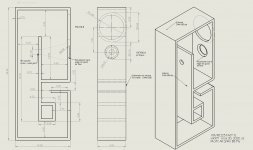And if you absolutely want more than one HF driver, for some reason, go the Nola route, with two drivers, one with an open back.

Hi Perceval,
Believe it or not, I have a pair of the Nola knock-offs with a Voxel sub. Amazing little speakers. I just have more imagination than designing skills.
Thanks!
Cool.
X's FAST XO design is only a first order, so it would be cheaper to go passive, in parts and in amps.
If you plan on building more speakers and experiment with curves and their impact, then go for the 2x4 HD version of minidsp.
Their newer SHD line has got some great reviews too.
X's FAST XO design is only a first order, so it would be cheaper to go passive, in parts and in amps.
If you plan on building more speakers and experiment with curves and their impact, then go for the 2x4 HD version of minidsp.
Their newer SHD line has got some great reviews too.
DSP is a great way to experiment with crossovers. It will open up a whole new world of DIY. You can tackle speakers like Synergy and 3 ways with ease. You need a calibrated microphone to do this though so get the UMIK-1 to go with it.
Another option is dayton DSP-408. Very simple and elegant 1 page software interface. The remote volume knob is noisy though so I would not get that.
Another option is dayton DSP-408. Very simple and elegant 1 page software interface. The remote volume knob is noisy though so I would not get that.
DSP is a great way to experiment with crossovers. It will open up a whole new world of DIY. You can tackle speakers like Synergy and 3 ways with ease. You need a calibrated microphone to do this though so get the UMIK-1 to go with it.
Another option is dayton DSP-408. Very simple and elegant 1 page software interface. The remote volume knob is noisy though so I would not get that.
Hi X,
I ordered the mini DSP HD and a UMIK-1 mic. The mic was an open box item, so it ended up costing $59 instead of $93. I'm looking forward to experimenting with it. I imagine I'll be asking a lot more questions before long.
Thanks,
Mike
I am looking to build this design for my first build for HT/Music use.
I am a complete noob at speaker building so please pardon any silly
questions!
I have been looking at a couple of traditional speaker designs like
Amigas by Paul Carmody, a couple of RS150 TMs and some Jeff Bagby designs
as well.
I don't really understand what transient perfect means.
It would be really helpful if anyone who has listened to one or more of these designs
could explain the differences between these speakers.
I was planning on using the tc9fd but then I came across the SB Acoustics SB10PGC21-4 driver. Can anyone comment on how it would compare to the tc9fd?
Thanks,
I am a complete noob at speaker building so please pardon any silly
questions!
I have been looking at a couple of traditional speaker designs like
Amigas by Paul Carmody, a couple of RS150 TMs and some Jeff Bagby designs
as well.
I don't really understand what transient perfect means.
It would be really helpful if anyone who has listened to one or more of these designs
could explain the differences between these speakers.
I was planning on using the tc9fd but then I came across the SB Acoustics SB10PGC21-4 driver. Can anyone comment on how it would compare to the tc9fd?
Thanks,
Pr2590,
Carmody and Bagby are master designers and you can’t go wrong with their stuff. However, their designs rely on conventional dome tweeter and midwoofer type alignments. Typically with a crossover above 2kHz - so not a FAST. If you want a full range driver FAST approach then this speaker design is the way to go. It has a 1st order crossover which means the signal in and signal out have a flat phase relationship. This is great for enhanced imaging and sound stage. The transient perfect refers to its ability to reproduce percussive sounds accurately. Most multiway speakers do not use 1st order crossovers because it requires a driver with very flat wide bandwidth and no anomalous peaks. So people use higher order crossovers to avoid the need for wide bandwidth. This causes phase distortions and may result in the tweeter and woofer being of opposite polarity in order to prevent a cancellation dip at the crossover frequency.
Non transient perfect speakers will reproduce a sharp percussive sound such as a rim shot or guitar pluck as multiple smaller peaks spread out in time over milliseconds. This slight spread in time makes the sound less sharp and less distinct. Whereas in a transient perfect speaker they sound is crisp and clear and natural. Very much the domain of a full range driver.
One way to tell if a speaker is transient perfect is to look at the measured step response. It should look like a right triangle with a sharply rising edge and a slower linear decay.
Do a search for measurements of high end speakers by John Atkinson of Stereophile. He has said that of the thousands of speakers he has tested, he can count on one hand, how many were transient perfect and produced a right triangle step response.
One of those is a Dunlavey SC-IV:
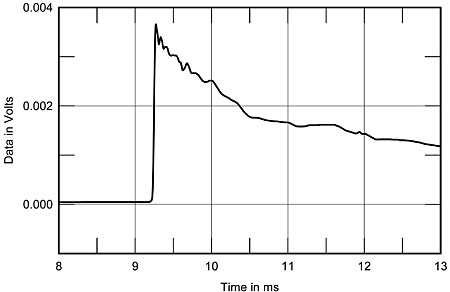
You can read about the full test here:
Dunlavy Audio Laboratories SC-IV loudspeaker Measurements | Stereophile.com
Let’s compare that to something also big and expensive like a Wilson Audio MAXX2 (or most any other high end multi-way speaker):
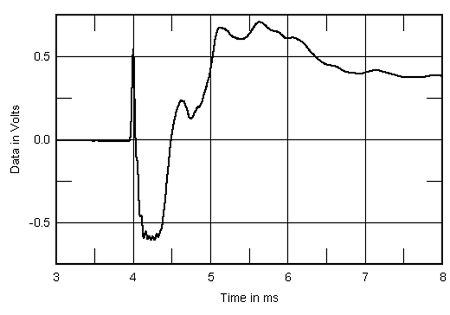
Full test here:
Wilson Audio Specialties MAXX2 loudspeaker Measurements | Stereophile.com
I am not picking on WA, because if you look at another highly regarded speaker, the B&W 802D, we get this for the step response:
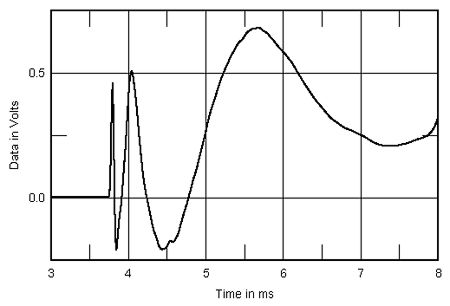
So how to read these plots? A single hard percussive strike - should be a step function with a decay. For the 802D, these hard edges are spaced in time several milliseconds apart depending on whether the tweeter is making the sound, the mid woofer is making the sound, or the bass woofer is making the sound. And some of it is a rarefaction versus a compression of the air sound waves. What this does is make the percussion less distinct and less realistic.
Here is the step and impulse response of the 10F/RS225 FAST speaker:
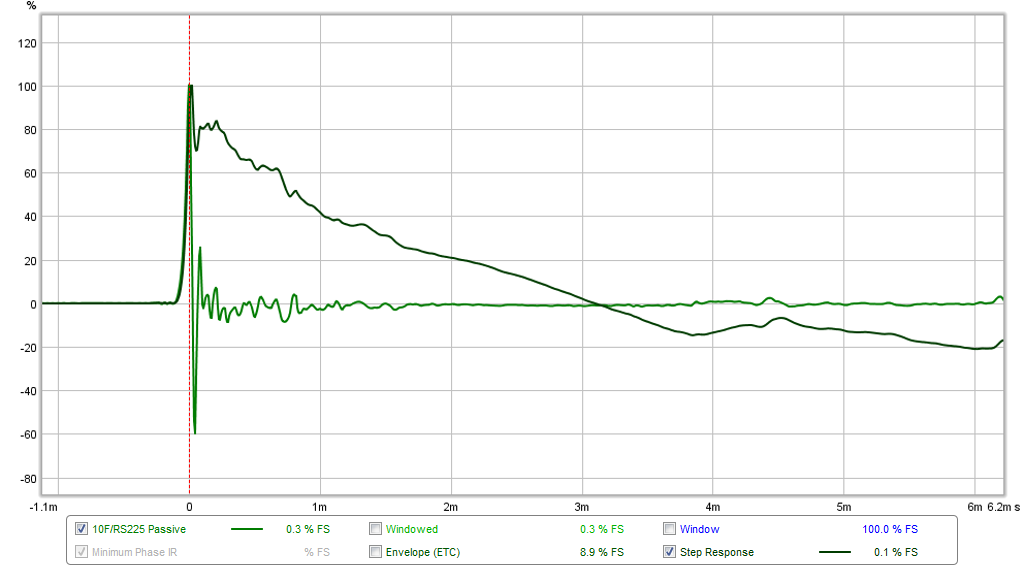
With regard to the SBA driver you are interested in, it looks like a fine driver and resembles a TG9FD fiberglass cone. It would work except it is 4ohms so the crossover has to be modified. With a 4ohm driver you would need to double the main coupling cap, already huge at 61uF. To make that 120uF would require a bipolar electrolytic capacitor. I would suggest you stay with 8ohm drivers. Almost any will work with some minor adjustments to the resistor attenuation.
If you like the sound of a fiberglass cone, try the TG9FD-08. Or the 10F/8414 if you don’t want to spend $110 on the 8424.
Carmody and Bagby are master designers and you can’t go wrong with their stuff. However, their designs rely on conventional dome tweeter and midwoofer type alignments. Typically with a crossover above 2kHz - so not a FAST. If you want a full range driver FAST approach then this speaker design is the way to go. It has a 1st order crossover which means the signal in and signal out have a flat phase relationship. This is great for enhanced imaging and sound stage. The transient perfect refers to its ability to reproduce percussive sounds accurately. Most multiway speakers do not use 1st order crossovers because it requires a driver with very flat wide bandwidth and no anomalous peaks. So people use higher order crossovers to avoid the need for wide bandwidth. This causes phase distortions and may result in the tweeter and woofer being of opposite polarity in order to prevent a cancellation dip at the crossover frequency.
Non transient perfect speakers will reproduce a sharp percussive sound such as a rim shot or guitar pluck as multiple smaller peaks spread out in time over milliseconds. This slight spread in time makes the sound less sharp and less distinct. Whereas in a transient perfect speaker they sound is crisp and clear and natural. Very much the domain of a full range driver.
One way to tell if a speaker is transient perfect is to look at the measured step response. It should look like a right triangle with a sharply rising edge and a slower linear decay.
Do a search for measurements of high end speakers by John Atkinson of Stereophile. He has said that of the thousands of speakers he has tested, he can count on one hand, how many were transient perfect and produced a right triangle step response.
One of those is a Dunlavey SC-IV:

You can read about the full test here:
Dunlavy Audio Laboratories SC-IV loudspeaker Measurements | Stereophile.com
Let’s compare that to something also big and expensive like a Wilson Audio MAXX2 (or most any other high end multi-way speaker):

Full test here:
Wilson Audio Specialties MAXX2 loudspeaker Measurements | Stereophile.com
I am not picking on WA, because if you look at another highly regarded speaker, the B&W 802D, we get this for the step response:

So how to read these plots? A single hard percussive strike - should be a step function with a decay. For the 802D, these hard edges are spaced in time several milliseconds apart depending on whether the tweeter is making the sound, the mid woofer is making the sound, or the bass woofer is making the sound. And some of it is a rarefaction versus a compression of the air sound waves. What this does is make the percussion less distinct and less realistic.
Here is the step and impulse response of the 10F/RS225 FAST speaker:

With regard to the SBA driver you are interested in, it looks like a fine driver and resembles a TG9FD fiberglass cone. It would work except it is 4ohms so the crossover has to be modified. With a 4ohm driver you would need to double the main coupling cap, already huge at 61uF. To make that 120uF would require a bipolar electrolytic capacitor. I would suggest you stay with 8ohm drivers. Almost any will work with some minor adjustments to the resistor attenuation.
If you like the sound of a fiberglass cone, try the TG9FD-08. Or the 10F/8414 if you don’t want to spend $110 on the 8424.
Last edited:
Esoteric ES180TiA-8 version?
@xrk971 I have been watching the PE site for a deal on the RS225-8 to complete the set of drivers for this build (I grabbed a pair of the Thiele branded 10fs from Madisound before they ran out). The other day, a pair of the the Dayton Esoteric ES180TiA-8 showed up for basically the same price as the RS225-8. Normally those speakers would be a little too rich for my newbie ambitions, but for $65 I was intrigued. The SPL looked pretty flat, especially in the bass region, but the Vas is much lower so I could either use a smaller (ported) enclosure or use a similar sized enclosure and get an f3 down in the 30's.
Can I ask what mods to the crossover you'd recommend to use the ES180TiA-8 instead of the RS225-8? Assuming the same baffle width and driver placement.
Resonant Frequency (Fs)33.7 Hz
DC Resistance (Re)7.4 ohms
Voice Coil Inductance (Le)1.13 mH
Mechanical Q (Qms)4.90
Electromagnetic Q (Qes)0.44
Total Q (Qts)0.40
Compliance Equivalent Volume (Vas)0.73 ft.³
Mechanical Compliance of Suspension (Cms)0.84 mm/N
BL Product (BL)9.8 Tm
Diaphragm Mass Inc. Airload (Mms)26.8g
Maximum Linear Excursion (Xmax)5.3 mm
Surface Area of Cone (Sd)132.7 cm²

@xrk971 I have been watching the PE site for a deal on the RS225-8 to complete the set of drivers for this build (I grabbed a pair of the Thiele branded 10fs from Madisound before they ran out). The other day, a pair of the the Dayton Esoteric ES180TiA-8 showed up for basically the same price as the RS225-8. Normally those speakers would be a little too rich for my newbie ambitions, but for $65 I was intrigued. The SPL looked pretty flat, especially in the bass region, but the Vas is much lower so I could either use a smaller (ported) enclosure or use a similar sized enclosure and get an f3 down in the 30's.
Can I ask what mods to the crossover you'd recommend to use the ES180TiA-8 instead of the RS225-8? Assuming the same baffle width and driver placement.
Resonant Frequency (Fs)33.7 Hz
DC Resistance (Re)7.4 ohms
Voice Coil Inductance (Le)1.13 mH
Mechanical Q (Qms)4.90
Electromagnetic Q (Qes)0.44
Total Q (Qts)0.40
Compliance Equivalent Volume (Vas)0.73 ft.³
Mechanical Compliance of Suspension (Cms)0.84 mm/N
BL Product (BL)9.8 Tm
Diaphragm Mass Inc. Airload (Mms)26.8g
Maximum Linear Excursion (Xmax)5.3 mm
Surface Area of Cone (Sd)132.7 cm²

This can work but the XO will have to be redone. Probably 400Hz XO so that it can maintain wide bandwidth with smooth response.
Can that be done on the existing pcb layout, with some changes to component values?
Yes, but will require careful measurements of the new driver mounted on the cabinet to get an FRD file. Then measure an impedance sweep for a ZMA file. Then load these files into Xsim or PCD and re-simuluate a new XO. Build a prototype XO. Measure and listen and adjust as needed. Honestly, it's a lot of work and I am not sure worth switching to the Esoteric line of drivers. If you are versed in XO design and want a project to keep you busy - this could be it. But it is almost a different speaker. The RS225-8 is the key driver for this speaker. Youc can use almost any 2.5in to 4in 8ohm full range driver and it can be made to work with simple resistor adjustment.
Just wanted to share an exciting development: a couple of guys local to my area are going to build some 3/4in BB ply 10F/RS225 FAST TL's and offered to make me a set if I share the cost of the materials with them - and help them with design questions and assembly. One of them is an expert cabinet maker, so I think this is going to work out really well. I am not sure if they are members on DIYA (yet) as I met them through a sale of one of my TPA3255 amps on my shop. But I sent them the plans and they are buying 6 sheets of 3/4in BB ply tomorrow. This is going to be fun. 
We will document the build as it goes along here of course.
We will document the build as it goes along here of course.
I am going to have to redraw the plans for all 3/4in thick BB ply. It will make fabrication a lot more streamlined if we don’t need to switch the wood thickness. Project is moving forward though. I am going to order a set of 10F/8414’s to test out and see if they fit the bill here.
Hi Zman,
It's a collaborative project - although most of the actual work will be by the cabinet maker, and me just providing design guidance. I hope to be getting a fully built cabinet, but will need to do the final stain/finishing myself. Will certainly post photos as we proceed.
It's a collaborative project - although most of the actual work will be by the cabinet maker, and me just providing design guidance. I hope to be getting a fully built cabinet, but will need to do the final stain/finishing myself. Will certainly post photos as we proceed.
- Home
- Loudspeakers
- Full Range
- 10F/8424 & RS225-8 FAST / WAW Ref Monitor
